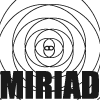Modernism and Antropofagia: Visual Culture and Authenticity in Latin America
Fabiola Martinez martinezf@madrid.slu.edu
Department of Modern Languages and the Arts, Saint Louis University, Madrid
The development of modern art in Latin America presents an interesting platform from which to explore the intersections and dialogues between dominant art historical discourses and the articulation of non-Western art practices and ideas. In 1921 David Alfaro Siqueiros wrote from Barcelona "Let us reject theories anchored in the relativity of 'national art'. We must become universal! Our own racial and regional physiognomy will always show through in our work." Like Siqueiros, many artists and intellectuals in Latin America were engaged in a complex dialogue between the external demands of modernity and local demands for cultural authenticity. As the many manifestos published during the 20th century testify, artists and intellectuals in Latin America were trying to mediate international modernism with local traditions and popular culture (often associated with notions of authenticity).
This session invites proposals that address the study of modernism and avant-garde movements in Latin America. Papers may investigate the gradual incorporation of new media and technologies as practices that mediated between local and external discourses on art and modernity; and the way in which the avant-garde's experimentation with industrial materials, for example, often responded to the artist's response to cosmopolitan modernism and his/her identification or rejection of national stereotypes. Studies may also look at the debates and the significance of abstraction as a language denoting universal and aesthetic principles, and figuration as a way to express ideologies and explicit references to cultural authenticity. Following Oswald de Andrade's concept of Antropofagia this session will therefore present an opportunity to address the significance of visual culture in Latin America, as a means to mediate and articulate local and external discourses, acknowledging in this way its contribution to the history of modern art.










